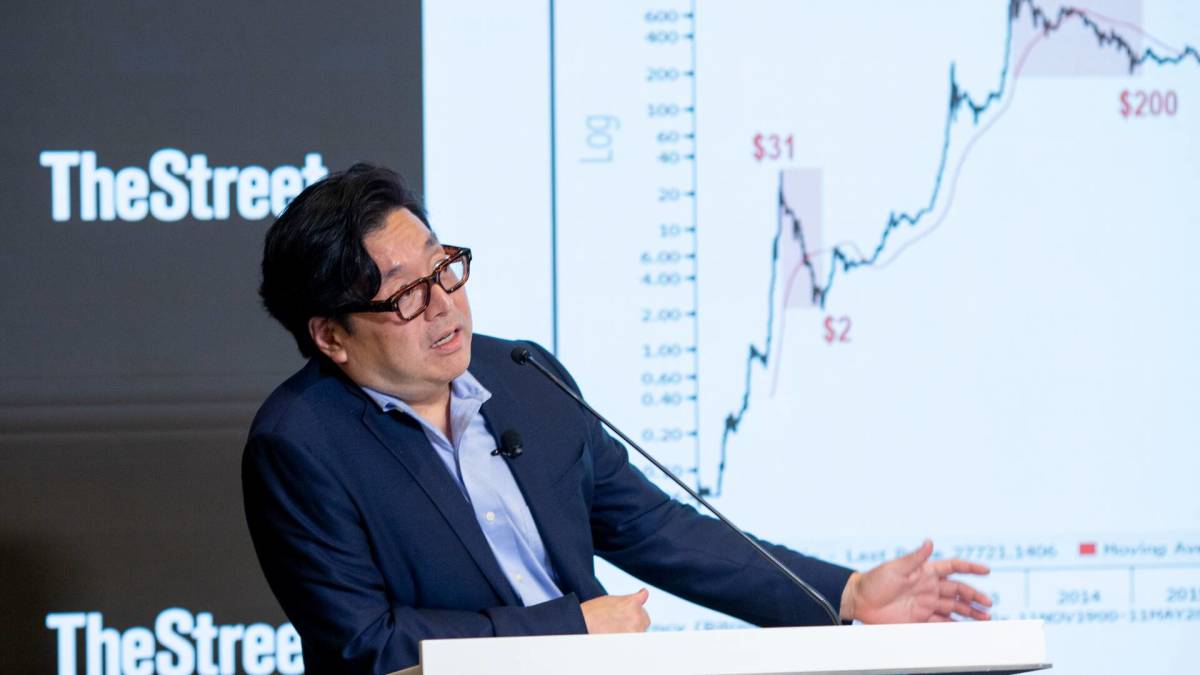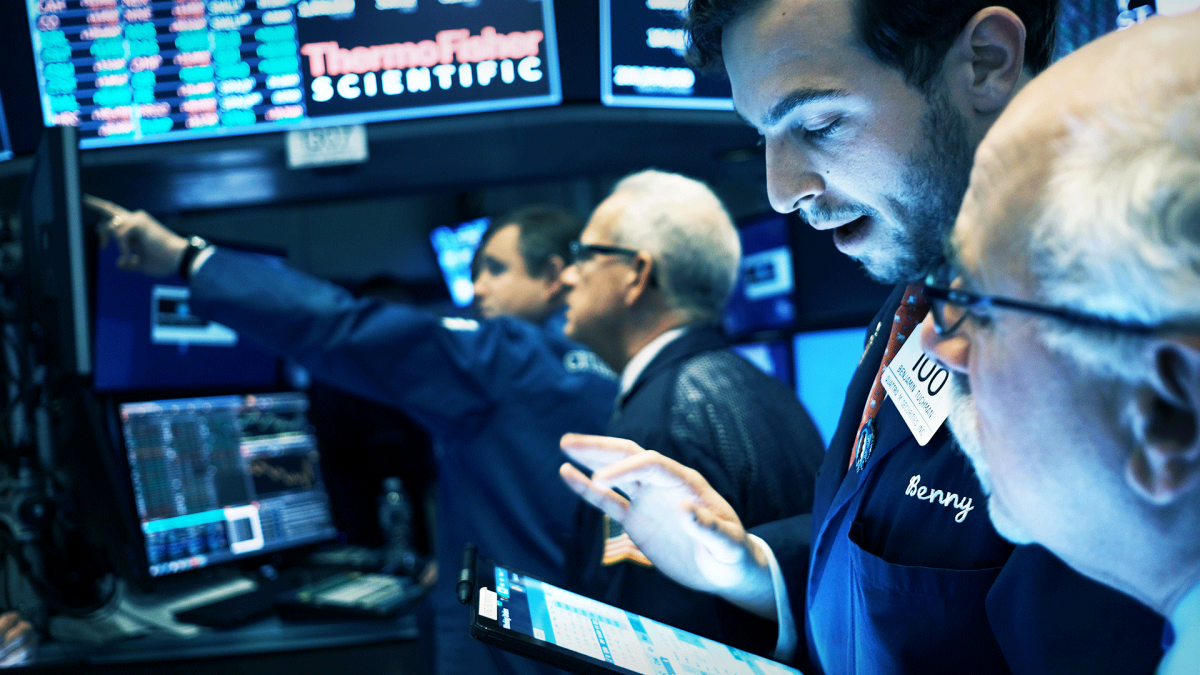
It's the question every investor asks as one year draws to a close: "What's the market going to do next year?"
Lots and lots of market watchers have been producing predictions for the last month or so, and we'll share some of them. With this caveat: Don't take them too seriously.
Many Wall Streeters were hoping for an okay 2023 at best after stocks were drubbed in 2022 thanks to the Federal Reserve's war on inflation. The Standard & Poor's 500 Index (^IN) -) fell 18.1% as the Fed was in the process of raising its key interest rate to 5.25% to 5.5%.
Business Insider wrote that most strategists were forecasting a small decline in 2023.
Fast forward a year, the S&P 500 finished this past week at nearly 4,755, up a little on the week but up a whopping 23.8% on the year, with four trading days to go.
It's just 1.3% below its record intraday high of 4,818.62, recorded in early January 2022.
Related: These sectors and stocks dominated Wall Street's 2023 gains
One money manager who has come close to the number is Thomas Lee of Fundstrat Global Advisors. By mid-summer in the midst of a lot of doom gloom, he predicted a year-end S&P level of 4,750. That generated some derision, but the index was already up 16% on the year and then saw a huge rally erupt at the end of October.
Why the bullishness? Because, he said in numerous interviews at the time, inflation would come down. Oil prices might stop rising. The economy would be steady. And the Fed would stop raising interest rates.
Investors started to agree with Lee this fall. So did the Fed. The central bank stopped raising rates in July. The 10-year note hit 5% in October and pulled back, letting mortgage rates move lower.
Oil prices fell. So did gasoline prices. Nationally, they're down nearly 20% since mid-September.
By its December meeting, the central bank finally said the inflation fight was going well, and rate cuts were coming. (Maybe in March but probably starting in June. The number of cuts nor their size is not yet known.)
In addition to the S&P 500, the Nasdaq Composite Index (^COMPX) -) is up 43.3%. The Dow Jones industrials (^DJI) -) are up 23.8%, and the Nasdaq-100 Index (^NDX) -) is up an astonishing 53.4%.
Joining in the party in November and December were other indexes, especially the small-cap Russell 2000, up 12.4% so far in December compared with the S&P 500's 4.1% gain.

Spencer Platt/Getty
Lee remains bullish, seeing the S&P 500 rising 9.3% in 2024. If you want a bigger bull, consider Ed Yardeni, long a fixture on Wall Street. Yardeni sees the S&P 500 hitting 5,400 next year and possibly 6,000 in 2025. In short, new-record territory.
But not everyone is bullish. JPMorgan analysts see the S&P 500 falling 11.7% from current levels to 4,200, with reports of economic softness evolving into a recession. Morgan Stanley isn't far behind. It guesses the index ends next year at 4,500, down 5.4%.
Doug Kass, the hedge-fund manager and Real Money Pro columnist, guesses the S&P never tops 4,900 but could fall to 4,100 because of rising oil prices, geopolitical crises and uncertain domestic politics.
The bear-iest bear is BCA Research, a Montreal-based advisory firm. It sees oil prices possibly rising and the lag effects from the Federal Reserve's rate increases in 2022 and 2023 combining to produce a nasty recession. Result: a sharp decline in the S&P 500 to perhaps 3,300.
The Magnificent Seven's big role
Sounds like all is well. Not quite.
A reality of the 2023 bull market is that it has been dominated/distorted by the gains from the Magnificent Seven stocks: Alphabet (GOOG) -), Apple (AAPL) -), Amazon.com (AMZN) -), Meta Platforms (META) -), Microsoft (MSFT) -), Nvidia (NVDA) -) and Tesla (TSLA) -).
The group is up an average 111.6% for the year, before any dividends, dominated by chip giant Nvidia, up 234%, and Meta, up 193.7%, as of Dec. 22. The laggards, if one can call them that, are Apple, up "only" 49% and Microsoft, 56.2%.
Take out those gains, according to S&P Dow Jones analyst Howard Silverblatt in a Dec. 23 report, and the S&P's 25.8% total return (including dividends) would drop to 9.5%. Which is roughly the gain for the equal-weighted S&P 500 index which tracks each stock the same way, regardless of size.
That's because the S&P 500 is a market-cap weighted index. The higher a stock's market cap, the biggest its influence on the index. The Magnificent Seven represent 28.2% of the total market cap of the stocks in the index.
Five of the Mag 7, as they are increasingly called, have market caps greater than $1 trillion. (This occurs when you add together the market caps of the two classes of Google common stock.)
The issues outside the market
While you can quibble with the bearish or softer outlooks, points they raise in common are important, including:
Oil prices. These are a wild card because of the Ukraine-Russia War and the Israel-Hamas war. In fact, crude oil rose for three days this past week, pulling up retail gas prices. But the uptick faded by the end of the week, as did pump prices.
Geopolitical worries. What will happen in the Ukraine War? And, perhaps as dangerous a question: Will China try to take over Taiwan militarily?
Economic softening. There are increasing reports of soft holidays sales and companies and governments cutting jobs in the United States as well as recession pressures in Europe and China.
The U.S. election ahead. This one seems to be a fight to the death, and the stresses will build by November.







